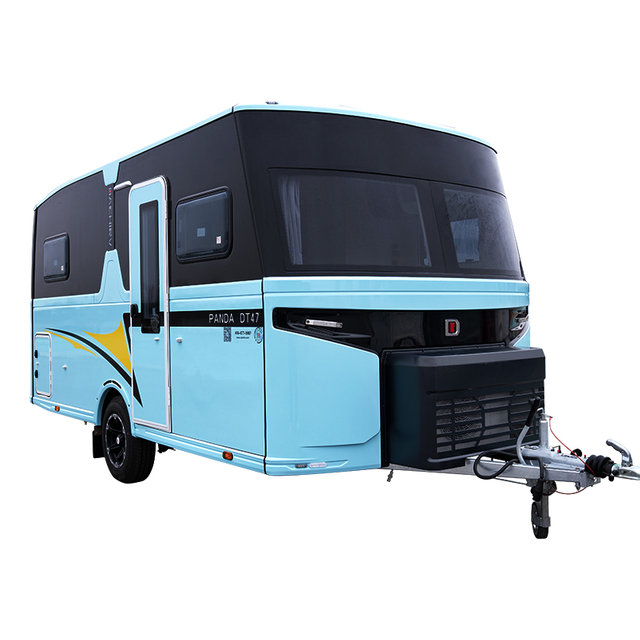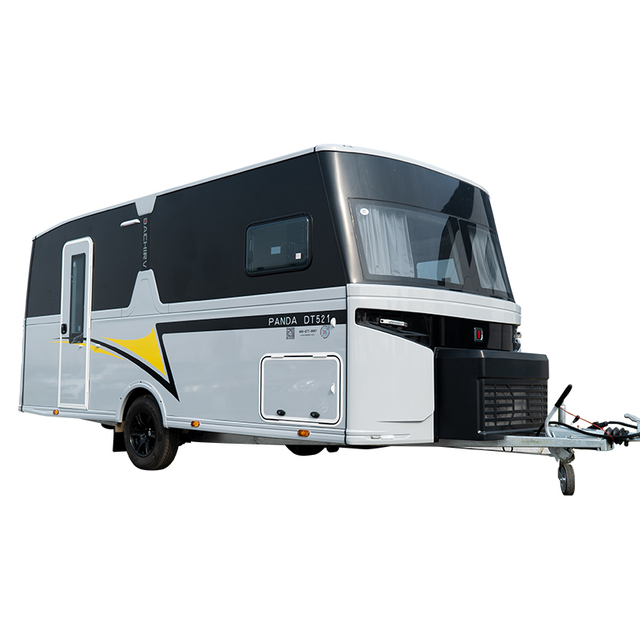

Views: 0 Author: Site Editor Publish Time: 2025-04-15 Origin: Site








Did you know that your RV's fresh water tank could be home to harmful bacteria and mold? Many RV owners use bleach to sanitize their water tanks, but there are other safer, eco-friendly options.
In this article, we’ll show you how to sanitize your RV water system without using bleach. You’ll learn about alternative methods like vinegar and hydrogen peroxide, and how to use them effectively to keep your water clean and safe.
Your RV's fresh water tank collects water from a variety of sources, which may not always be clean. Whether you're filling up at a campsite or using a public water supply, contaminants such as bacteria, mold, and algae can accumulate in your RV’s water system. Over time, this can lead to unpleasant tastes, odors, and even health risks.
Sanitizing your RV fresh water tank is essential to:
Prevent the growth of harmful bacteria, mold, and mildew
Maintain clean, fresh-tasting water
Avoid any unpleasant odors that could affect your overall RV experience
Protect your plumbing system from damage caused by bacteria buildup
For full-time RV dwellers or those who use their RVs frequently, it's especially important to keep the water tank sanitized. This ensures that you have clean water for drinking, cooking, bathing, and other daily activities while on the road.
While bleach is a widely used and effective option for sanitizing an RV fresh water tank, many RV owners prefer not to use it for a variety of reasons. These reasons include:
Harsh Chemicals: Bleach is a harsh chemical that can potentially damage the RV plumbing system and seals over time if not used carefully.
Strong Odor: Bleach can leave a lingering chemical smell, which may affect the taste and quality of the water for days, even after the tank is flushed.
Environmental Concerns: Many people prefer to avoid bleach because of its potential harm to the environment. The chemicals in bleach can be harmful to aquatic life if not disposed of properly.
As a result, many RV owners seek natural or less toxic alternatives to bleach that can achieve the same results without the negative side effects.

There are several alternatives to bleach that can be used to sanitize your RV water tank. Let’s take a look at the most common options: vinegar, hydrogen peroxide, and commercially available RV sanitizers.
Vinegar is a great natural alternative to bleach. It’s effective at removing minerals and killing bacteria without the harsh chemicals. However, to be as effective as bleach, the vinegar must be heated to at least 130°F (55°C) to kill bacteria effectively.
Step-by-Step Guide to Sanitizing with Vinegar:
Turn Off Your Water Heater and Pump
Before starting, ensure that your water heater and pump are turned off to prevent damage.
Drain the System
Drain your RV’s fresh water tank and all the plumbing lines, including the hot water tank, using the appropriate valves.
Mix the Vinegar Solution
Mix equal parts of water and white vinegar. For an average RV fresh water tank, you will need at least 60 liters (15.8 gallons) of the solution to fully sanitize the tank.
Fill the Tank and Circulate the Solution
Pour the vinegar solution into the fresh water tank and fill the rest with potable water. Turn on the water pump and run water through all faucets until you smell the vinegar solution.
Let it Sit
Allow the vinegar solution to sit in your RV water system for at least 24 hours. This ensures that the solution can effectively kill any bacteria and clean the lines.
Drain and Flush the System
Drain the solution out of your RV's water system. Refill the tank with fresh water and flush out the remaining vinegar solution by running the faucets again.
By using vinegar, you’ll have a clean, eco-friendly water system without the use of toxic chemicals.
Hydrogen peroxide is another great alternative to bleach that is both effective and eco-friendly. It works by releasing oxygen, which helps eliminate bacteria and germs in the water system. It is a natural disinfectant and is considered safer for the environment compared to bleach.
How to Sanitize with Hydrogen Peroxide:
Prepare the Solution
Mix a 3% hydrogen peroxide solution with water. You’ll need approximately 1 quart of hydrogen peroxide for every 15 gallons of water in your RV's fresh water tank.
Add the Solution to the Tank
Pour the hydrogen peroxide solution into your RV's fresh water tank.
Fill the Tank
Fill the rest of the tank with clean water.
Circulate the Solution
Turn on the water pump and run water through all faucets, ensuring the solution runs through the entire system.
Let it Sit
Allow the solution to sit for at least 5 hours to ensure the hydrogen peroxide has enough time to kill bacteria.
Drain and Flush
Drain the tank, refill with clean water, and flush the system thoroughly until the peroxide is completely gone.
There are many commercial RV sanitizing products available, such as the Thetford RV Fresh Water Tank Sanitizer. These products are specifically designed to sanitize RV fresh water tanks and lines without using harsh chemicals like bleach.
Benefits of Commercial RV Sanitizers:
Designed for RVs: These products are formulated to be safe for RV plumbing systems.
Easy to Use: Commercial sanitizers come with clear instructions and are often easier to use than DIY solutions.
Effective: Many of these sanitizers are effective at killing bacteria, mold, and mildew without harsh odors.
When choosing a commercial product, make sure to select one that is approved by your RV manufacturer and follow the instructions for proper use.

Even with alternative sanitizing methods, it is important to maintain a regular cleaning schedule for your RV’s water system. Generally, you should sanitize your RV fresh water tank every 6 months, but there are other situations when you should consider sanitizing sooner:
After your RV has been stored or winterized
After buying a new or used RV
If your RV’s water system has been unused for more than two weeks
After staying at a campground where the water quality was compromised
Sanitizing your RV fresh water tank is an essential maintenance task that ensures clean, safe water for drinking, cooking, and bathing. While bleach is a popular option, there are plenty of eco-friendly and safer alternatives, such as vinegar, hydrogen peroxide, and commercial sanitizing products. These alternatives are just as effective at eliminating bacteria, mold, and mildew, while also being gentler on your RV plumbing system and the environment.
Remember, whether you're full-time or part-time RVing, regular sanitization will help keep your fresh water system in optimal condition, ensuring that your travels are both comfortable and safe. If you need assistance with RV maintenance or other RV-related needs, visit us for expert tips, services, and products that support your RV adventures.
Q: Why should I sanitize my RV’s fresh water tank?
A: Sanitizing your RV’s fresh water tank is essential to prevent bacteria, mold, and algae buildup, ensuring clean, safe water for drinking, cooking, and bathing.
Q: Can I sanitize my RV fresh water tank without bleach?
A: Yes! You can use alternatives like vinegar, hydrogen peroxide, or commercial RV sanitizers that are safe and effective without the harsh chemicals in bleach.
Q: How often should I sanitize my RV’s water system?
A: It’s recommended to sanitize your RV fresh water tank every six months. However, you should do it sooner if your RV has been unused for an extended period or after visiting places with poor water quality.
Q: What is the best alternative to bleach for sanitizing an RV’s water tank?
A: Vinegar and hydrogen peroxide are excellent alternatives to bleach. Vinegar needs to be heated to 130°F (55°C) for maximum effectiveness, while hydrogen peroxide is a natural disinfectant.
Q: How do I sanitize my RV water tank with vinegar or hydrogen peroxide?
A: Simply drain your RV’s system, mix vinegar or hydrogen peroxide with water, fill the tank, and run the solution through your faucets. Let it sit for a few hours before draining and flushing with clean water.